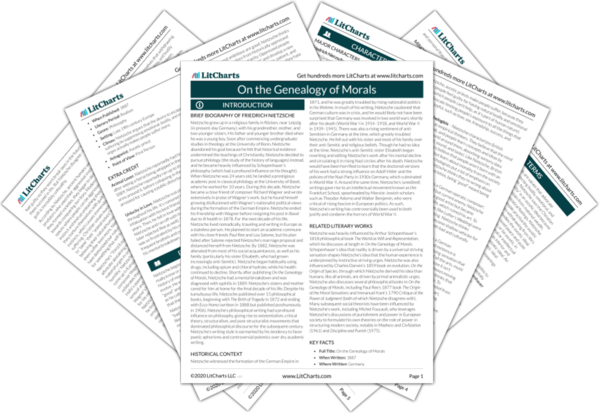Nietzsche uses the image of a “beast of prey” to symbolize humanity’s natural tendency toward strength, aggression, and predatory behavior. He argues that many ancient cultures (including Ancient Greece and Rome) valorized being strong, aggressive, and powerful as “good.” To Nietzsche, this makes sense, because human beings are innate predators—meaning we have aggressive instincts and derive satisfaction from exerting power over our prey. In early human history, people lived as nomadic hunters, but as they started to form larger communities, they shifted their aggressive instincts towards conquering territory and establishing societies. In doing so, they inevitably oppress others. Oppressed people in such societies aren’t free to be strong, aggressive, and powerful, so they start to demonize their oppressors as barbaric “beasts of prey.” In essence, by demonizing humankind’s natural instincts, Nietzsche believes that downtrodden people create a standardized view of powerful people as monstrous and morally evil, as symbolized by the inhuman image of a “beast of prey.” Nietzsche also uses the metaphor of “beasts of prey” to capture the animal instincts in humanity—the aggressive, predatory aspects of human nature—that modern European culture tries to “tame.”








